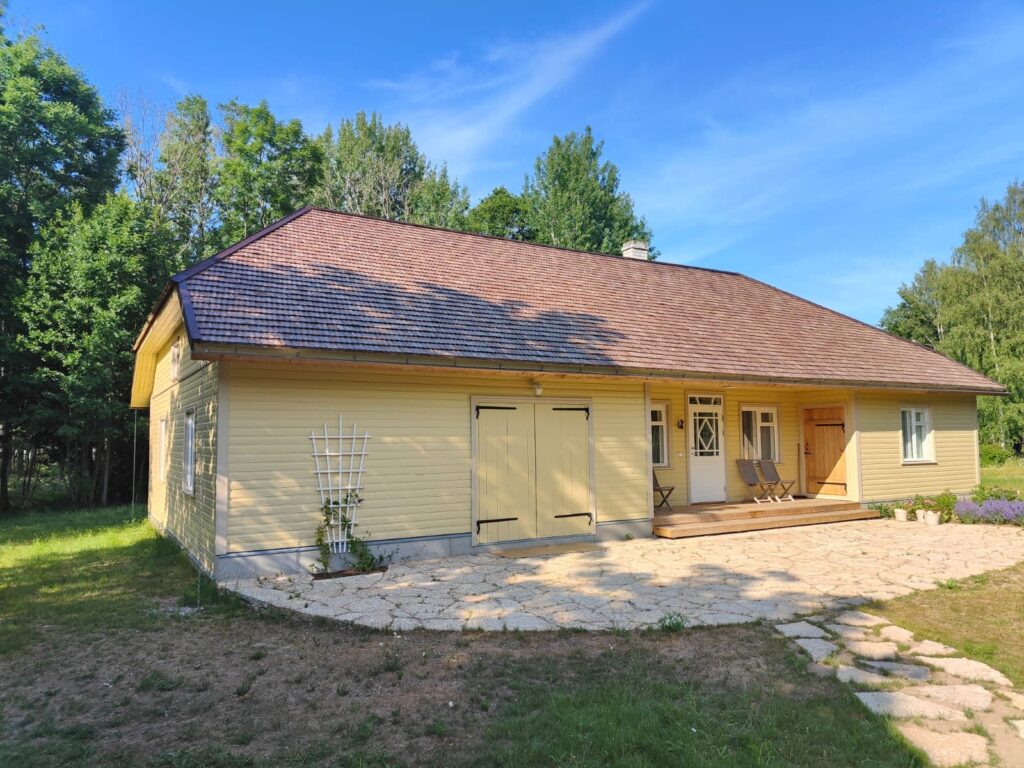Shingle roofs were first built in Estonia at the end of the 19th century, dating back to Alexander Martin Luther and Markel Makarov establishing a company that offered roof shingles as the most popular article of sale.
This roof type was originally used in Finland. At first, shingles were imported from Finland, but later on people of more entrepreneurial minds took to the saw and started to make the shingles themselves. There is also another explanation – old people recall that shingles were made by travelling Jewish craftsmen who only employed shave plane and groove plane and did all the work by hand. This is why this type of roofing is called “Jew boarding” in some places.
Roof shingles are small boards with a length of 60 cm, sawn from a soft timber log, with a groove running along the thicker edge and tongue along the opposite side. Shingles are fitted into each other to form sturdy tongue-and-groove roofing. Roof shingles are made of softwood, such as aspen, as this plays on the roof less.

Shingles have a specific shape and, therefore, shingle roofs look better than chip roofs. Shingle roofs can be fitted to any roof structures with an angle that exceeds 30 degrees; most naturally, wooden roofs represent the best choice for old, renovated buildings that may have been fitted with a wooden roof previously. But of course, you would be welcome to use it for brand new buildings – after all, wood represents a natural and highly dignified building material.
There are two options available for fitting a shingle roof: shingles can be fitted at a 90 degree angle with respect to eaves, in a vertical position. You can also use a more decorative option that involves fitting shingles at a 30-40 degree angle to form a ‘herringbone’ pattern. The latter method has some benefits, such as when rain water hits the roof it will flow over the groove as shingles on this type of a roof are fitted to run from the right to the left and vice versa; the aim of this is to keep the groove side underneath. The groove component is considered an advantage for shingle roofs; on the other hand, it may also become a disadvantage as the material fitted inside the groove may never become completely dry. Therefore, it can easily become the starting point of a rotting process. For this very reason, you should pay special attention to roof maintenance; good tips can be found from the maintenance manual.
The durability of roofing material largely depends on proper maintenance; a good homeowner will inspect the roof at least once a year and remove any loose debris, followed by impregnation of the roof approximately every five years. Special attention should be given to sinks and other more complicated spots, as snow and rain water can remain longer in such places. Wooden roofs can easily last for 60-80 years – provided that they’re given proper maintenance. When modern methods and materials are used, the most common assumption is that the possible service life would be approximately 10 years per layer, which will ensure a minimum service life of 30 years; this will, however, largely depend on the roof location, slope, maintenance and proper fitting.
Tar oil is most commonly used to impregnate roof shingles and, technologically, shingles can be either impregnated before they’re fitted by providing approximately 50% dousing, or after fitting and final drying by applying tar oil to the outer layer of shingles. Roof tarring is the method that we use in construction works of value, in terms of heritage conservation; this involves painting roof material with liquid tar that is heated on an open flame or some other source of heat.